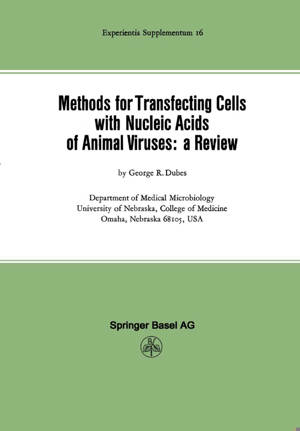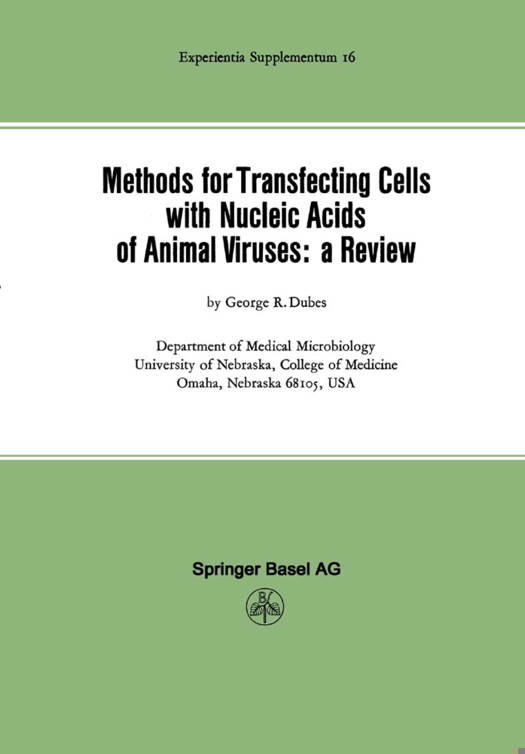
- Retrait gratuit dans votre magasin Club
- 7.000.000 titres dans notre catalogue
- Payer en toute sécurité
- Toujours un magasin près de chez vous
- Retrait gratuit dans votre magasin Club
- 7.000.0000 titres dans notre catalogue
- Payer en toute sécurité
- Toujours un magasin près de chez vous
49,45 €
+ 98 points
Description
Transfection, which is the infection of a cell with naked viral nucleic acid with the consequent production of complete virus, was first reported in 1956 for the ribonucleic acid of tobacco mosaic virus. Many reports of transfection, and several reviews of the field, have appeared since then. Crucial for the demonstration of transfection is that the viral nucleic acid is not damaged in the process of obtaining it from the virions, or from the infected tissue. To this end, procedures are designed to minimize the possibili- ties of degradation of the viral nucleic acid by nucleases present in the biolo- gical source. The most common method for preparing viral nucleic acid is the phenol method in which virus or infected-tissue preparations are extracted with phenol. Much of the protein goes down into the phenol phase, whereas the viral nucleic acid stays up in the aqueous phase. The transfection methods for animal virus nucleic acids are of three major kinds: (a) hypertonic methods; (b) insoluble facilitator methods; and (c) polycation methods. These methods have wide applicability to vertebrate celli animal virus NA systems, but anyone method does not seem to be highly effective for all such systems with the possible exception of the method using the polycation diethylaminoethyl-dextran. The insoluble facilitator method shows astonishing 'cell-specificity'; that is, it is a very effective method for transfecting some kinds of vertebrate cells, but nearly ineffective for some other kinds.
Spécifications
Parties prenantes
- Auteur(s) :
- Editeur:
Contenu
- Nombre de pages :
- 82
- Langue:
- Allemand
- Collection :
- Tome:
- n° 16
Caractéristiques
- EAN:
- 9783034857741
- Date de parution :
- 23-08-14
- Format:
- Livre broché
- Format numérique:
- Trade paperback (VS)
- Dimensions :
- 170 mm x 244 mm
- Poids :
- 149 g

Les avis
Nous publions uniquement les avis qui respectent les conditions requises. Consultez nos conditions pour les avis.






